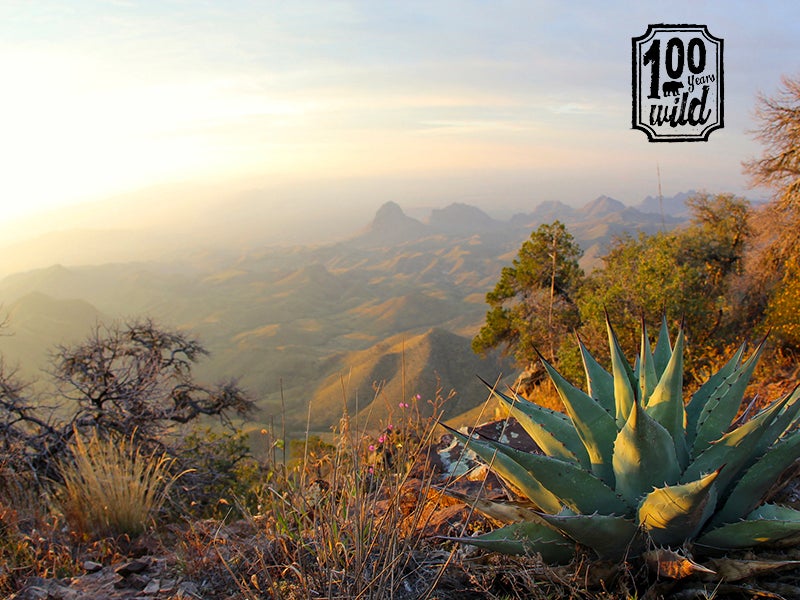Our National Parks Need a Breath of Fresh Air
Haze pollution is one of the biggest threats facing our parks and those who want to enjoy them.

This page was published 9 years ago. Find the latest on Earthjustice’s work.
With summer in full swing, many families across the country are preparing to embark on their annual vacations. If last year was any indication, many will head to a National Park Service (NPS) site. In fact, 2015 was a record-breaker, with sites nationwide hosting more than 307 million visits! As the NPS celebrates its 100th anniversary in August, we can expect millions of Americans to continue to seek solace and recreation in our nation’s parks.
However, before you hit the trails, you might want to check the local air quality conditions. Much attention has been paid to the effects visitors can have on sensitive ecosystems. But often overlooked is the fact that visiting many of our parks might actually be bad for you, the visitor. That’s because, simply put, many parks have polluted air. As the National Parks Conservation Association reports, the air in many parks can be laden with haze and smog that is just as dirty—or dirtier—than air in big cities. From the Great Smoky Mountains to Joshua Tree National Park, haze pollution is one of the most pervasive and urgent threats facing our parks and those who want to enjoy them.
Haze, largely the result of burning fossil fuels, is a dangerous mix of particulates and toxic gases. There is good reason to be concerned about breathing this dirty air. The EPA warns that exposure to particulates and ozone can cause lung irritation, breathing problems, asthma, heart attacks and even premature death. These public health risks are especially serious for vulnerable groups, such as children, senior citizens and people with breathing problems like asthma. Haze pollution can also do real damage to the parks themselves. Haze is comprised of the same pollutants that contribute to algal blooms that choke lakes and ponds; acid rain that damages plant life, buildings and monuments; diminished tree growth and increased susceptibility to pests; and birth defects and disease in wildlife.
No doubt about it—our parks need help. Fortunately, we have the tools to help reduce air pollution. The Regional Haze Rule (RHR), a Clean Air Act program covering 156 parks and wilderness areas, is intended to restore air quality to natural conditions at these sites. The program is straightforward; it instructs states to work with the EPA, the National Park Service, and other agencies that manage public lands to create plans that put parks on a path to cleaner air. From what we have seen, the RHR can work to reduce the emissions that contribute to haze pollution. It has already driven the retirement of nearly two dozen fossil fuel-burning power plants and spurred the installation of pollution controls on dozens more. To date, the RHR has also led to the reduction of 785,000 tons of sulfur dioxide and 420,000 tons of nitrogen oxides in the air—two key contributors to haze. As a co-benefit, the rule has also led to cuts of more than 52 million metric tons of carbon emissions.
So the good news is that Earthjustice is fighting and winning victories that will help protect our parks. But to continue clearing the air, the RHR needs to be strengthened. The Obama administration is currently reviewing proposed updates to the haze rule that, if adopted, could ensure greater accountability for polluters and provide improved transparency and guidance for states creating stronger pollution cleanup plans. But there are also provisions under consideration that should be tossed out, such as additional delays and weakening the progress reports—provisions that some states, in concert with polluters, would surely exploit at the expense of public health.
With final updates to the haze rule expected later this year, you can help secure the strongest possible protections by submitting an official comment. The EPA is accepting public feedback until August 10 and they need to hear from our members and supporters. You can be sure polluters will weigh in, so take action and make your voice heard today! (Update 8/11: More than 24,000 Earthjustice members submitted comments in support of a strong haze rule. Thank you to all who spoke out!)
It’s up to all of us to ensure that future generations can experience these most iconic and treasured places. Get out there—go hiking or biking or camping or fishing. Enjoy our national parks, and be engaged in the fight to make sure they’re protected for generations to come.
As the National Park Service turns 100 this summer, the 100 Years Wild series celebrates the value of public lands as refuges to wildlife and people, while also shining a light on the threats to these irreplaceable landscapes in a changing and warming world.
Established in 1989, Earthjustice's Policy & Legislation team works with champions in Congress to craft legislation that supports and extends our legal gains.